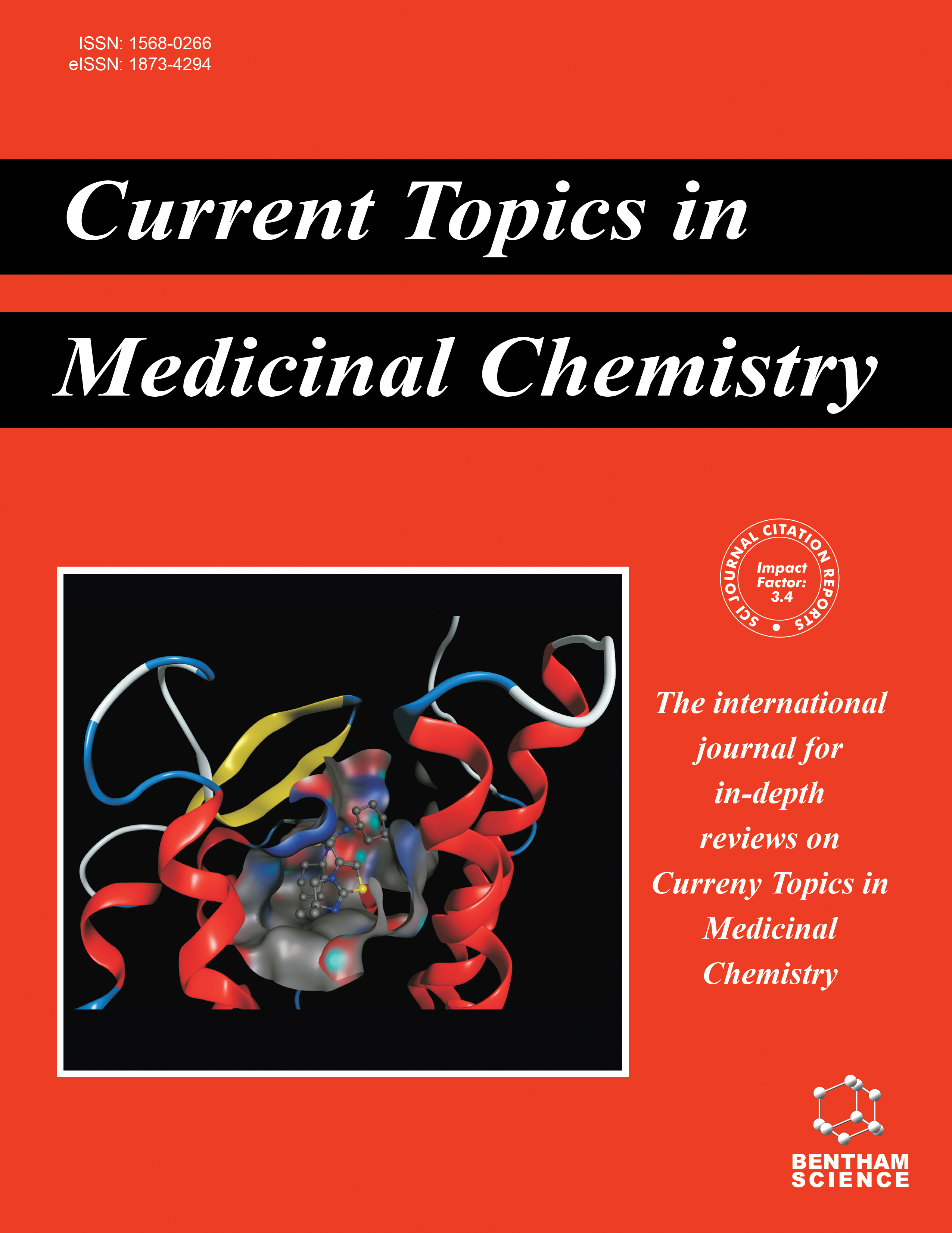- Home
- A-Z Publications
- Current Topics in Medicinal Chemistry
- Previous Issues
- Volume 18, Issue 24, 2018
Current Topics in Medicinal Chemistry - Volume 18, Issue 24, 2018
Volume 18, Issue 24, 2018
-
-
RNAIII Inhibiting Peptide (RIP) and Derivatives as Potential Tools for the Treatment of S. aureus Biofilm Infections
More LessAuthors: Michele Ciulla, Antonio Di Stefano, Lisa Marinelli, Ivana Cacciatore and Giuseppe Di BiaseS. aureus under the biofilm mode of growth is often related to several nosocomial infections, more frequently associated with indwelling medical devices (catheters, prostheses, portacaths or heart valves). As a biofilm, the biopolymer matrix provides an excellent growth medium, increasing the tolerance to antibiotics and host immune system. To date, the antimicrobial therapy alone is not effective. A novel strategy to preve Read More
-
-
-
Antibiotics Targeting the 30S Ribosomal Subunit: A Lesson from Nature to Find and Develop New Drugs
More LessAuthors: Anna M. Giuliodori, Roberto Spurio, Pohl Milón and Attilio FabbrettiThe use of antibiotics has revolutionized medicine, greatly improving our capacity to save millions of lives from otherwise deadly bacterial infections. Unfortunately, the health-associated benefits provided by antibiotics have been counteracted by bacteria developing or acquiring resistance mechanisms. The negative impact to public health is now considered of high risk due to the rapid spreading of multi-resistant Read More
-
-
-
A Survey of the Anti-microbial Properties of Naturally Occurring Prenyloxyphenylpropanoids and Related Compounds
More LessO-Prenylphenylpropanoids represent a group of rare natural products. During the last twenty years, such phytochemicals have been revealed to possess a great pharmacological potential. These compounds have been obtained for the most part from plant species of the Rutaceae, Apiaceae, and Fabaceae families, as well as from fungi and bacteria. In this review we wish to detail the state of the art about O-prenylphenylprop Read More
-
-
-
Natural-based Antibiofilm and Antimicrobial Peptides from Micro-organisms
More LessAuthors: Aysenur Yazici, Serkan Ortucu, Mesut Taskin and Lisa MarinelliAs the resistance to antimicrobial molecules increases among bacteria, the need for new antimicrobial molecules increases. Antimicrobial peptides (AMP), which may be a new generation of antibiotic candidates, are important in this respect. AMPs are small, cationic and amphipathic peptide sequences. In eukaryotes, they are synthesized as a part of the immune system. Substantially, AMPs are discovered in all kingdoms of lif Read More
-
-
-
Psychobiome Feeding Mind: Polyphenolics in Depression and Anxiety
More LessAuthors: Ilaria Matarazzo, Elena Toniato and Iole RobuffoRecently gut bacterial populations seem to be involved in many functions and in the pathogenesis of several medical conditions. Traditionally the intestinal microbiome has been recognized to play an important role in metabolizing food compounds in simpler chemical structures for the absorption of different nutrients, and in maintenance control of gastrointestinal pathogens species. Bacterial populations are implicated Read More
-
-
-
Antimicrobial Activity of Different Antimicrobial Peptides (AMPs) Against Clinical Methicillin-resistant Staphylococcus aureus (MRSA)
More LessBackground: Antimicrobial research is being focused to look for more effective therapeutics against antibiotic-resistant infections caused by methicillin-resistant Staphylococcus aureus (MRSA). In this direction, antimicrobial peptides (AMP) appear as promising tool. Objectives: This study evaluated the antimicrobial activity of different AMPs (Citropin 1.1, Temporin A, Pexiganan, CA(1–7)M(2–9)NH2, Pal-KGK-NH2, Pal-KKKK-N Read More
-
-
-
Efficacy of Pexiganan Combination with Tigecycline in a Mouse Model of Pseudomonas aeruginosa Sepsis
More LessBackground: Pseudomonas aeruginosa is a gram-negative pathogen, associated with a severe mortality rate. It is also difficult to treat due to numerous resistance mechanisms to a wide range of antibiotics. Objective: Evaluate the activity of pexiganan, an antimicrobial peptide, in combination with two clinical antibiotics (azithromycin and tigecycline) that are not active against P. aeruginosa. Methods: Ten clinical P. Read More
-
Volumes & issues
-
Volume 25 (2025)
-
Volume 24 (2024)
-
Volume 23 (2023)
-
Volume 22 (2022)
-
Volume 21 (2021)
-
Volume 20 (2020)
-
Volume 19 (2019)
-
Volume 18 (2018)
-
Volume 17 (2017)
-
Volume 16 (2016)
-
Volume 15 (2015)
-
Volume 14 (2014)
-
Volume 13 (2013)
-
Volume 12 (2012)
-
Volume 11 (2011)
-
Volume 10 (2010)
-
Volume 9 (2009)
-
Volume 8 (2008)
-
Volume 7 (2007)
-
Volume 6 (2006)
-
Volume 5 (2005)
-
Volume 4 (2004)
-
Volume 3 (2003)
-
Volume 2 (2002)
-
Volume 1 (2001)
Most Read This Month
Article
content/journals/ctmc
Journal
10
5
false
en


